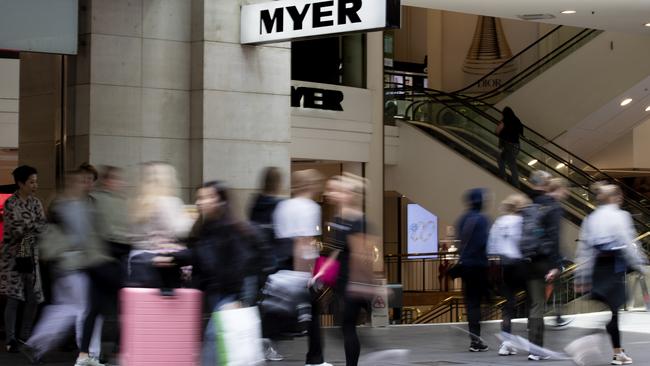Why business is going to be the driving force behind Australia’s economic recovery

It’s no secret that many businesses are struggling to survive at the moment.
The general consensus is that we have hit the bottom of the trough, the worst is behind us and we should expect some growth in 2025. But it will be patchy and weak.
As government support inevitably recedes, it will be up to business to drive the recovery.
For many, it doesn’t matter whether we are in a technical recession or not. It just feels like it.
Memories of “the recession we had to have” in the 1990s are playing tricks on our minds.
It feels like the same slog, the same cost pressures, the same battle for every inch of growth.
So, the September quarter growth numbers came as no surprise.
They confirmed that, outside of the Covid pandemic, we are living through the slowest pace of growth since the 1990s.
While we are still not in a technical recession (a fall in gross domestic product over two successive quarters), we have had seven consecutive quarters of negative GDP per person.
That means the economy might not be in recession, but individual consumers have been for some time.
We also know – confirmed by our federal Treasurer, Jim Chalmers – that record government spending (12.3 per cent of nominal GDP) is all that is keeping us from tipping over into a technical recession.
The key question is how long can federal and state governments continue to prop up the economy?
Recently, the Organisation for Economic Co-operation and Development (OECD) said that the time for government largesse in Australia should come to an end to enable governments to get their house in order – that is, get their debt under control.
The data shows what businesses are feeling. Consumer spending – particularly discretionary spending – is down, driven by higher interest rates and higher inflation. Translation: the cost of living is starting to bite hard and consumers are spending less.
All this and more has fed into a noticeable shift in the language from the governor of the Reserve Bank, Michele Bullock.
With journalists and economists poring over every word of each monetary policy statement, Ms Bullock, at the December press conference, acknowledged that the shift in language to a more dovish position was deliberate. Basically, she was saying: We aren’t there yet, but we are close to a potential cut in interest rates.
What was a pipe dream in October is now a potential February pre-election gift for the government. Most expect a rate cut is more likely in May next year.
For context, the RBA slammed on the metaphorical economic brakes with 13 interest rate increases from May 2022 to November 2023. Rates have now been on hold for 13 months.
Why this matters is the hope that a rate cut will coincide with, or stimulate, the predicted recovery next year; that consumer spending will rebound and the inflation genie will be shoved firmly back in the bottle.
However, don’t expect the double-digit growth we experienced in the past as we shot out of downturns. Apparently, this one will be slow and patchy.
In a moment of unusual and probably unintended bipartisanship, the Treasurer and his opposition counterpart, Angus Taylor, agree that it will be up to business to drag the struggling economy kicking and screaming out of the slump.
They are both right.
The most effective and sustainable economic growth stems from the private sector. It doesn’t rely on taxpayer funds, it creates jobs, it drives innovation, it invests in new technologies and it enhances productivity and competition — helping to lower prices during inflation.
The private sector is the engine room of our economy and is the cure to our current economic malaise.
So, what needs to be done to help business lead the Australian economy out of this economic slump?
For government, it is time to forget about the well-trodden path of business bashing for political point scoring, and instead to talk up the role of business in our economy.
It is time for less intervention and less regulation on business – not more. It is not just workplace laws causing hiring timidity. It is the combination of a swath of other far-reaching regulations which are suffocating business investment and confidence in Australia.
For business, it is time to collectively start talking up the economy to build confidence; and to lean into marketing as the critical driver of growth and profitability. If you want to grow your business – especially in tough times – you must invest in marketing.
Marketing chiefs should position themselves as strategic business partners that deliver growth. This includes demonstrating the return on marketing investment through metrics like revenue and incremental sales growth that leaders and finance teams understand.
While the road to recovery will be slow and uneven, the path forward is clear: the private sector needs to take the wheel to drive sustainable growth.
This requires a collective effort to rebuild confidence and reaffirm the vital role of business in our economy.
Governments must prioritise creating a supportive regulatory environment, while business will have to lean on marketing as the proved catalyst for growth and profitability.
Josh Faulks is the chief executive of the Australian Association of National Advertisers.





Is the worst behind us?